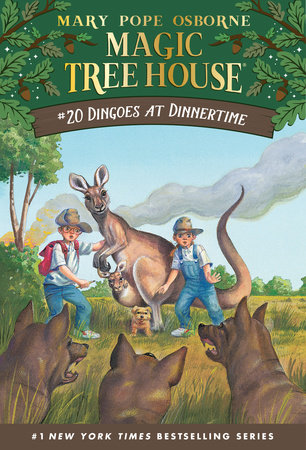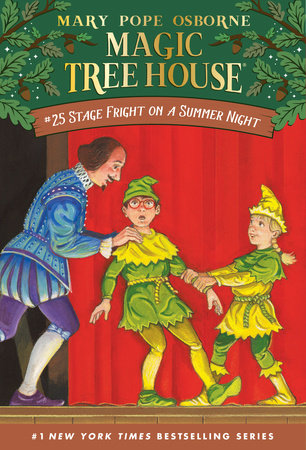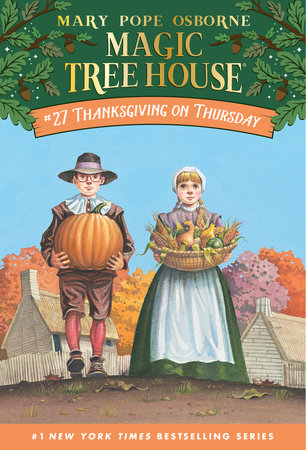











Oops. I blazed through these twelve books without stopping to offer you my reviews.
Book 28 is where this series was recently split. The books published later than High Tide in Hawaii are now titled the The Magic Tree House: The Merlin Missions, and the numbering begins there again, so that, yes, Christmas in Camelot is both The Merlin Missions, Book 1 and formerly The Magic Tree House, Book 29. However, newer Magic Tree House books were published beginning in 2017, so A Big Day for Baseball is now numbered The Magic Tree House, Book 29.
It’s confusing. It just is.
All that to say, I am going to break here to review these previous 12 before I even decide whether I will continue reading in the publishing order (Christmas in Camelot next) or continue The Magic Tree House series (A Big Day for Baseball next) and return to The Merlin Missions later.
The 6 year old and his aunt that I am racing through these books (they are winning) chose The Magic Tree House route, and she may be convincing me to do the same by luring me with promises that the history is less problematic once you reach book 32.
Although because my library has yet to make A Big Day for Baseball available through Libby, it seems likely that Christmas in Camelot will be my next.
Books 17-20, Jack and Annie travel in time to gather ingredients for a spell that allows Morgan to free a person who has been transformed into a dog.
Tonight on the Titanic had better pacing than most of these books. I blazed through it in a night happily and was displeased when it ended.
In this set I was most nervous about Buffalo Before Breakfast. In this, Jack and Annie visit the Lakota before white European Americans traveled so far west. They are accepted easily into friendship and the Lakota’s way of life.

The wording of the following fact from Tigers at Twilight gave me pause.
Dingoes at Dinnertime actually turned out to be more problematic than Buffalo Before Breakfast. In it, the siblings find art left the Aborigines, and they touch the handprints to active a magic that they neither know about nor understand and about which no one in the text teaches them; they do not meet any humans in the novel. Touching the glyphs seems to cause the rain to come.
Books 21-24, Jack and Annie travel back in time to collect pieces of writing that Morgan says will help a beleaguered Camelot. The two bring those writings to King Arthur, who has lost hope as he has faced difficult days of late, at the end of Book 24. The children’s courage encourages the king.
During their visit to a Union camp during the Civil War, the two meet Clara Barton and help her care for the wounded soldiers, including a tent of Black Americans. With these characters, Jack and Annie learn about slavery, and Osborne does name it as the cause of the Civil War. This book especially the lesson that the siblings come away with is about the horrors of war. Barton has them tend to Confederate as well as Union soldiers.
Through their journeys in books 25-28, Jack and Annie become masters of everyday magic: theater, animals, community, and friendship.
This line in Stage Fright on a Summer Night made me frown, remembering that earlier in the series the children visited an Athenian theater.
In Good Morning, Gorillas, Jack and Annie again travel to Africa, but this time they do not interact with any humans, which means that the pattern remains that the siblings are able to communicate with any human except the Masai warrior that they met in Lions at Lunchtime.
The Pilgrims that the siblings meet at Plymouth do find their speech strange, but they can still understand. Jack and Annie struggle with words like “roots” and “hearth,” commonly used in today’s Modern American English.
In High Tide in Hawaii, the siblings travel to pre-invasion Hawaii and join in a luau, stay the night, surf, and dance the hula to tell their story of narrowly evading being swept away by a tsunami. The Hawaiians do not question the arrival of the two white children, who claim to be from the other side of the island when asked.
I still even as a 32 year old college graduate learned facts from these books, and as I did with the previous four, I did some fact-checking as I read these books. I learned that kangaroos will abandon their joeys to lead away dingoes. I learned about the role of drummer boys in the Civil War. I learned about the books lost in the aftermath of the San Francisco earthquake. I learned that hula is a form of storytelling, which I really probably ought to have known before.
—
Osborne, Mary Pope. The Magic Tree House, Book 17: Tonight on the Titanic, Book 18: Buffalo Before Breakfast, Book 19: Tigers at Twilight, Book 20: Dingoes at Dinnertime, Book 21: Civil War on Sunday, Book 22: Revolutionary War on Wednesday, Book 23: Twister on Tuesday, Book 24: Earthquake in the Early Morning, Book 25: Stage Fright on a Summer Night, Book 26: Good Morning, Gorillas, Book 27: Thanksgiving on Thursday, Book 28: High Tide in Hawaii. Illus. Sal Murdocca. Random, 2010 (Kindle editions). Originally published 1999-2003.
Intended audience: Ages 6-9.
Visit the series’ page for links to order, summaries, sample pages, and games.
This review is not endorsed by Mary Pope Osborne, Sal Murdocca, or Random House. It is an independent, honest review by a reader.


